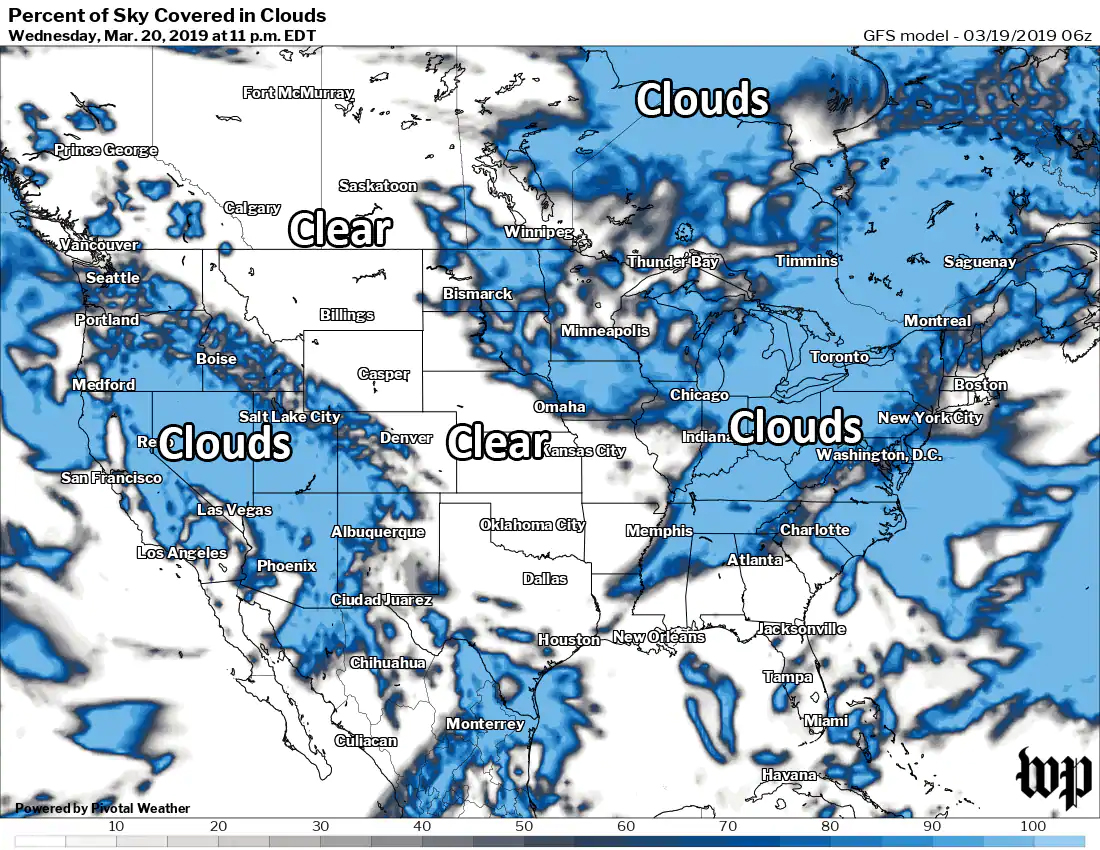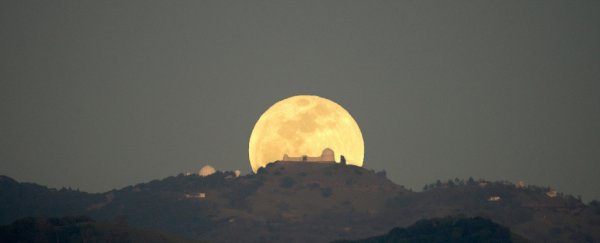Spring officially begins in the Northern Hemisphere early Wednesday evening at 5:58 pm Eastern (9:58 pm UTC). Less than four hours after the onset of the new season, a stunning spring supermoon will be full in the night sky.
The third and final supermoon of 2019, it reaches 100 percent fullness at 9:43 pm Eastern. It's the first time in two decades a full moon and the start of spring have been so close to each other.
This full moon is also called the "worm moon" (or sap moon) in the Northern Hemisphere. The name ties into how "The ground begins to soften and earthworm casts reappear, inviting the return of robins," according to The Old Farmer's Almanac.
A full moon and the spring equinox ending up so close to each other is a special treat.
"This is the closest coincidence of a full moon with the March equinox since March 2000 - 19 years ago," wrote EarthSky.org.
"The full moon and March equinox won't happen less than one day apart again for another 11 years, until March 2030."
The fact that this full moon is also a supermoon makes it even more unusual. The final supermoon of the series, there won't be another until February 2020. Typically, three to five supermoons occur in any year.
Although a supermoon does not appear bigger than an average moon to the human eye - except when it looms near the horizon - it does tend to appear brighter. In fact, it can appear as much as 30 percent brighter than normal.
Supermoons occur when a full moon is in perigee or making its closest pass to our planet. Perigee happens because the Moon's orbit is not a perfect circle, so there are times when it is relatively close to us on Earth and other times when it is comparatively far away.
Higher-than-normal tides and some coastal flooding also are frequent concerns during a perigee moon.
Using NASA data, USA Today reported that this supermoon will be 224,173 miles (360,771 kilometres) from Earth. That's roughly 14,000 miles closer than average.
The closest supermoon in recent times came November 14, 2016, when the Moon was 221,524 miles from Earth, according to Space.com.
How and where to watch
Wednesday evening's sky conditions support the best viewing from Texas north-northwest into Montana.
In the Washington region, the full moon rises in the eastern sky at 7:02 pm (11:02 pm UTC) Wednesday, shortly before sunset at 7:19 pm.
 Cloud cover forecast for Wednesday night. (Capital Weather Gang and Pivotal Weather)
Cloud cover forecast for Wednesday night. (Capital Weather Gang and Pivotal Weather)
Unfortunately, local sky observers seem likely to face increasing clouds by late Wednesday. It should stay dry through the evening, with rain possible later at night.
If you want to avoid the possibility of clouds interfering with your view Wednesday evening in Washington, Tuesday night's Moon is pretty close to full at 96 percent or greater illumination. Clear skies are expected.
2019 © The Washington Post
This article was originally published by The Washington Post.
